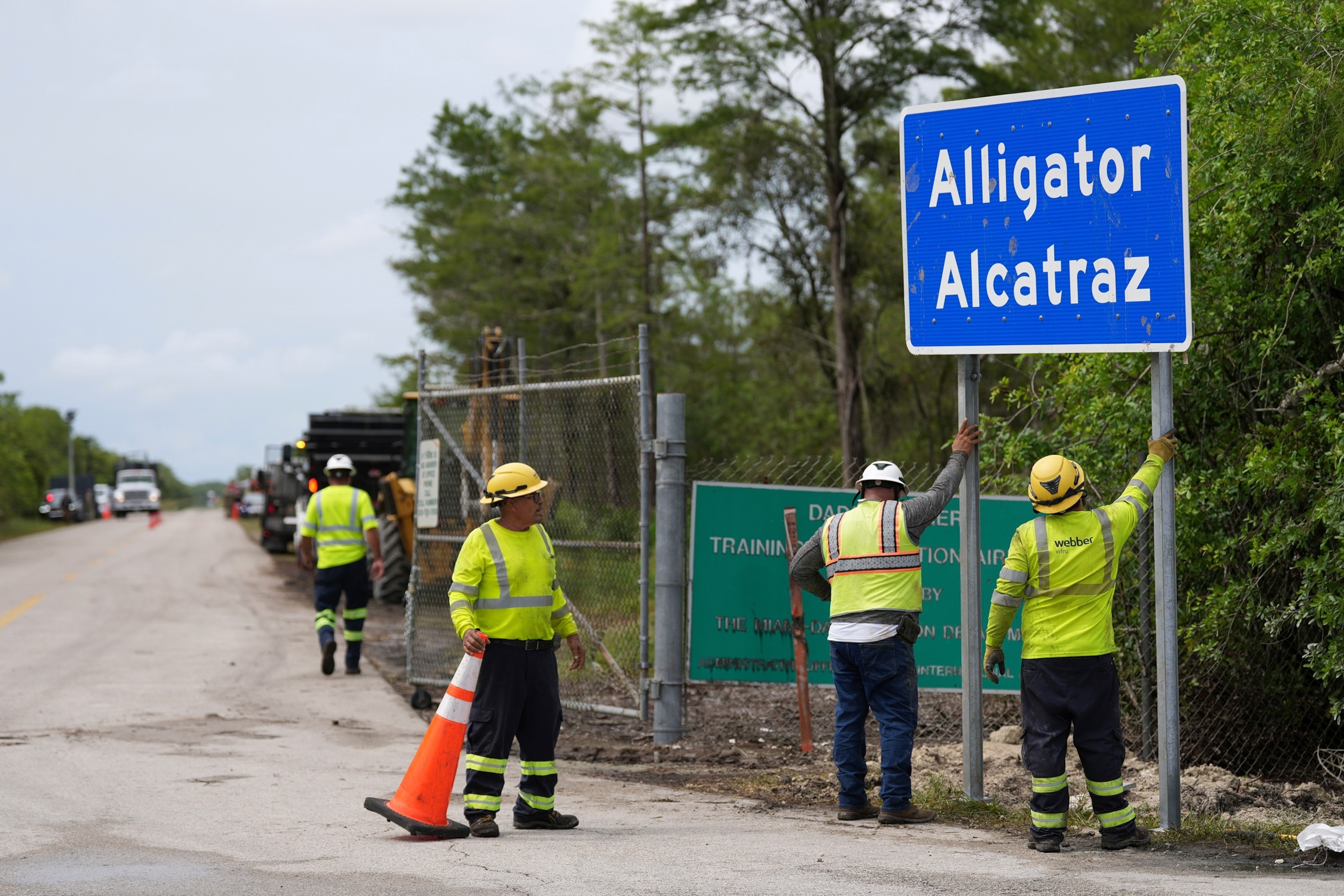Known for the homonymous reptiles that inhabit the nearby swamps, the migrant detention center called “Cocodrilo Alcatraz” faces the possibility of being closed by concerns about some of the less known inhabitants of the area: bats, screens and waters of the Everglades.
On Wednesday, a federal judge celebrates a probative hearing on whether to block operations in the controversial installation because the construction of the site supposedly ignored the environmental impact studies required by the federal government.
The hearing, which is expected to testify federal, state and tribal officials, occurs in the midst of greater scrutiny of the installation, which was once promoted as a “unique window to carry out the mass deportation agend of President Trump”.
Immigrant defenders have alleged that detainees have supported inhuman conditions, including flooded facilities, spoiled foods and suffocating heat, and that they have limited access to their lawyers and are effectively found in a jurisdictional “black hole”.
In a separate case that defies the legality of the installation, a federal judge ordered federal and state officials on Thursday to provide documentation that shows which government or contractor is authorized to detain people in the extensive complex. With state and federal officials who dodge the responsibility of the site, the defenders have criticized the government for being vague about who directs the facilities to avoid supervision.
While Wednesday’s audience is limited to environmental problems, including impacts on the national preserve Big Cypress nearby, the testimony is expected to throw light on the installation operations and could result in a federal judge who orders the installation to close until the required environmental impact studies are carried out.
“They have many bodyguards and many police officers who are in the form of crocodiles. You don’t have to pay them so much,” Trump said last month when he visits the installation, and added that he would like to see similar facilities built.

Workers install a reading “Aligator Alcatraz” signs at the entrance of a new migrant detention center at the Training and Transition Center of Dade-Collier, July 3, 2025, in Ochopee, Fla.
Rebecca Blackwell/AP
On Tuesday, the National Security Department announced a similar association, this time between the Federal Government and the State of Indiana, to build a migrant detention center called “Speedway Slammer”.
Located 50 miles west of Miami in the heart of the Everglades of Florida, “Aligator Alcatraz” was quickly built for a matter of weeks, using hundreds of tents, trailers and other temporary facilities to house more than 3,000 detainees. The installation was built on the lands of the training and transition airport of Dade-Collier, a piece of asphalt barely used owned by the Miami-Dade County.
The site was initially conceived at the end of the 1960s as part of an unfortunate plan to build the “Everglades Jetport”. As President Richard Nixon marked the beginning of an era of new environmental protections, including the law that is now used to challenge the Alcatraz crocodile, the plan to build the site was to drain, and the remaining asphalt was later used as an aviation training site.
“Now, history is repeated as [plaintiffs] Once again, you must act to avoid destructive development in the heart of the Everglades ecosystem in the same place, “says the current demand.
The installation is next to the Big Cypress National Preserve and the Big Cypress area, ecologically sensitive and protected areas that house threatened species, including the Kite Everglade Snail Kite, Florida Panther, Wood Stort and Florida Bapeted Bat.
The Alcatraz crocodile also resorted to the Indian tribe of Miccosukee, including villages, a school, traditional hunting areas and sacred sites. The Miccosukee tribe joined the lawsuit last month, arguing that the installation threatens to damage the nearby tribal villages.
“The hurried transformation of the site into a mass detention center, which includes the installation of housing units, the construction of food systems and food services, high intensity industrial lighting infrastructure, diesel energy generators, substantial filling material that alter the natural land and transportation logistics of transport logistics (including the apparent use of reception and detainees of the detainees).
The environmental groups and the tribe presented the case claim that the expansion installation was built without the federal or state government making an environmental impact declaration, which is required by virtue of the National Environmental Policy Law (NEPA) so that the public and legislators can understand the impact of a project. They also argue that the government failed to obtain public information about the project.
The groups are asking the United States District Judge, Kathleen Mary Williams, a person designated by Obama, to block the ongoing operations in the facilities until the government fully complies with Nepa and stops any ongoing construction.
The executive director of the Florida Emergency Management Department, Kevin Guthrie, a defendant appointed in the lawsuit, has argued that the installation is directed by the State, which is not subject to the regulations of Nepa. It also states that the environmental impact of the site is minimal because it was built in a place that already serves as an active airfield.
The Department of Justice has also argued that environmental groups cannot be irreparable damage and that Nepa does not give a court to block the use of the installation.






